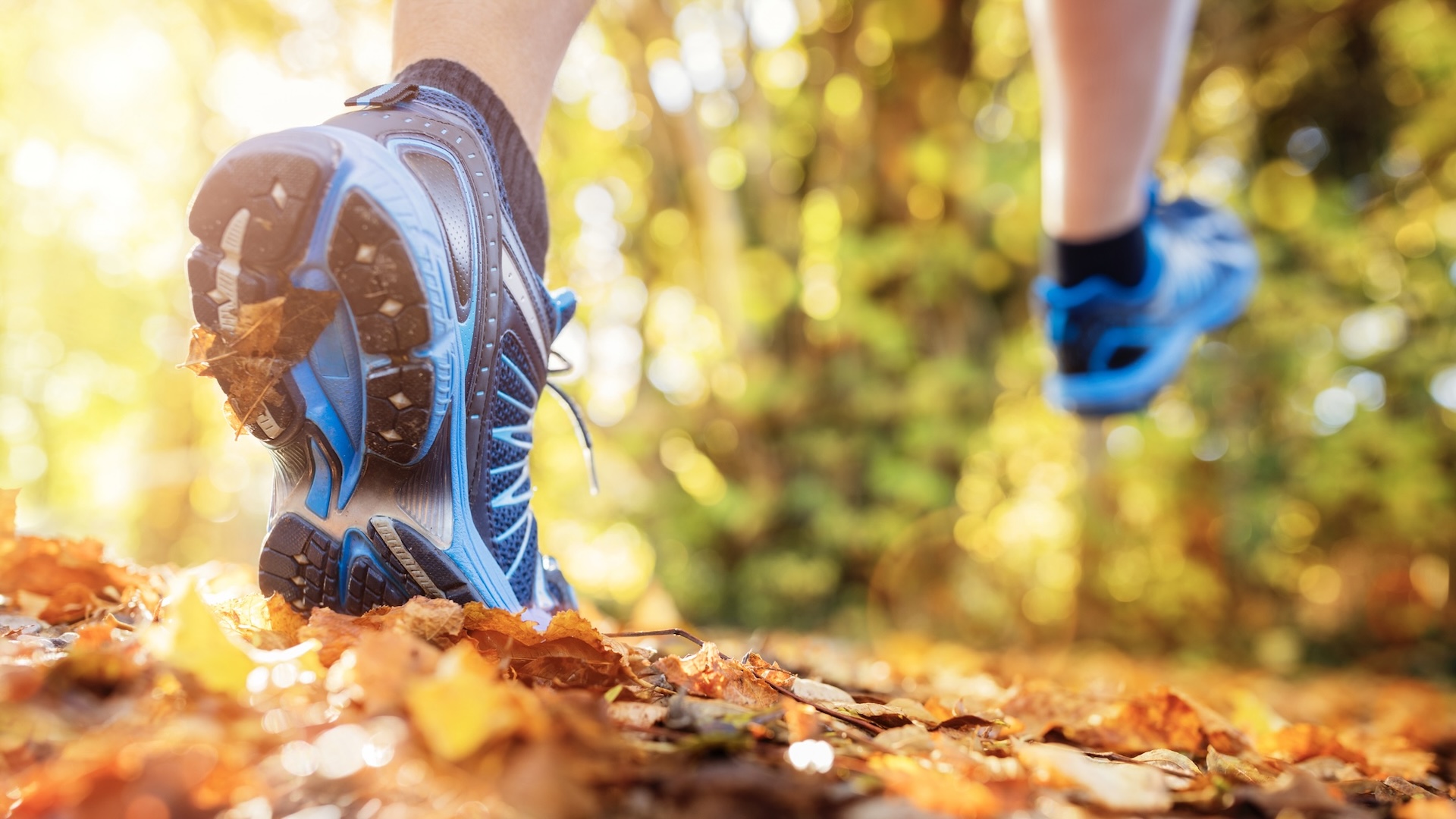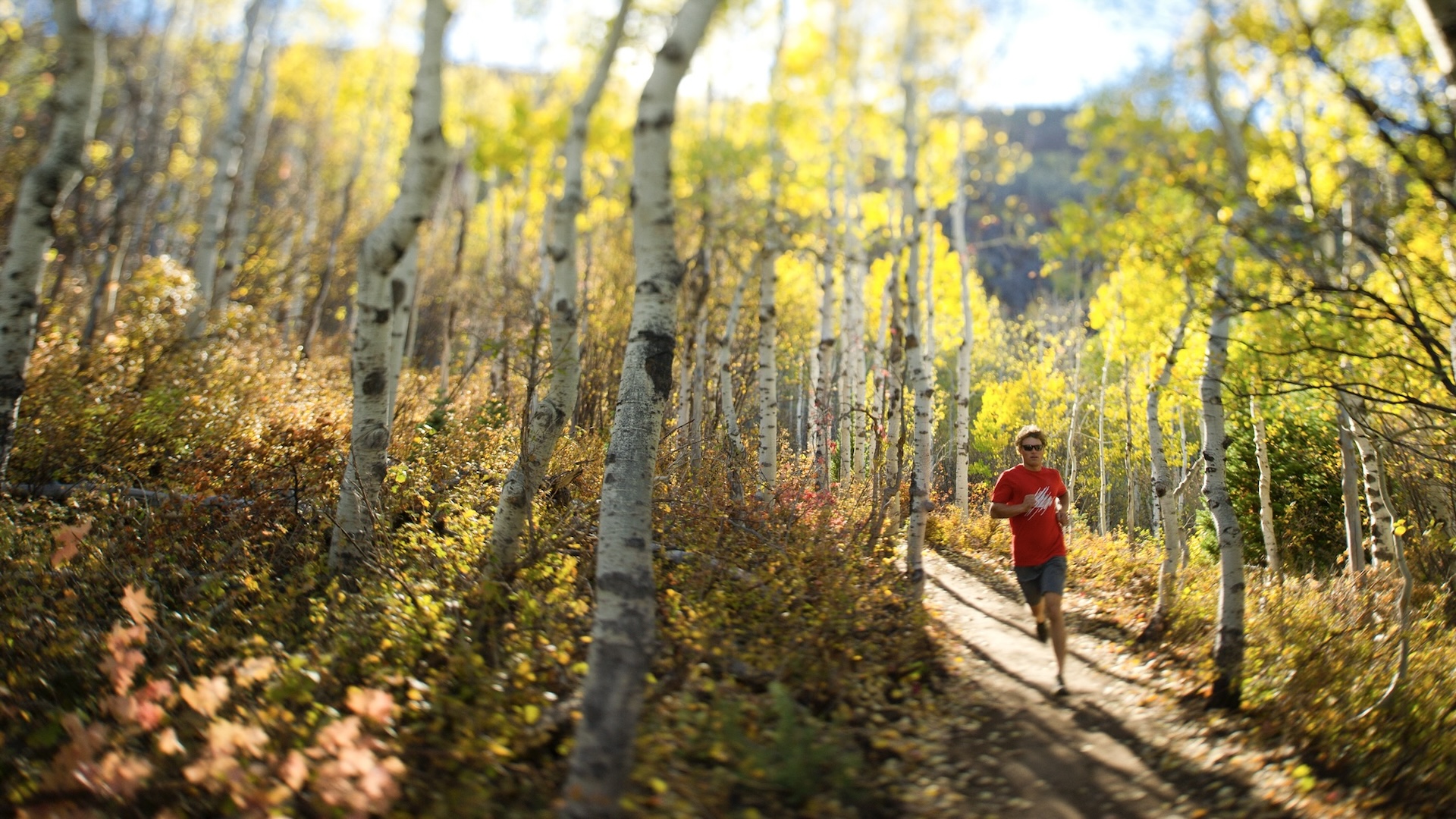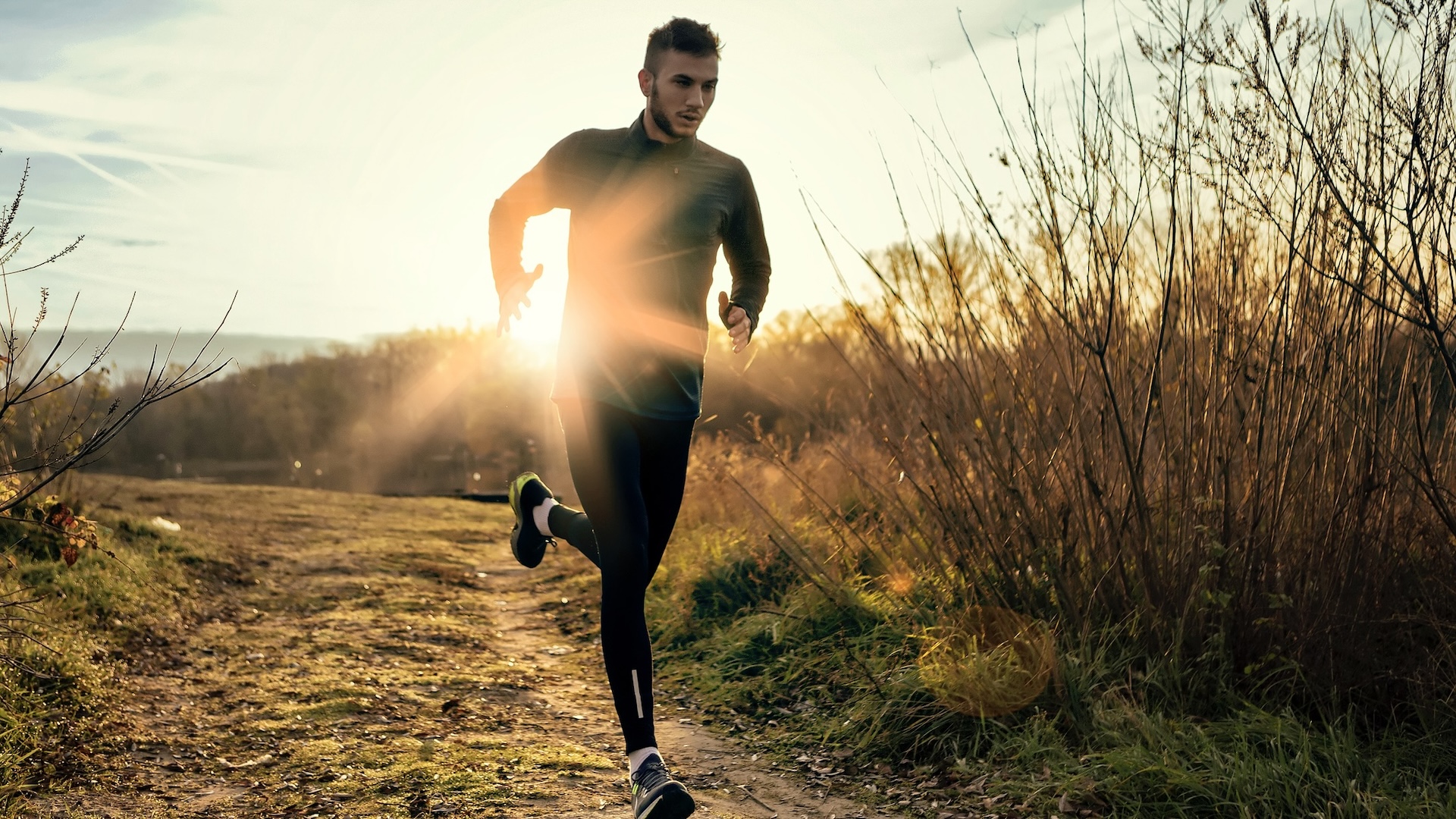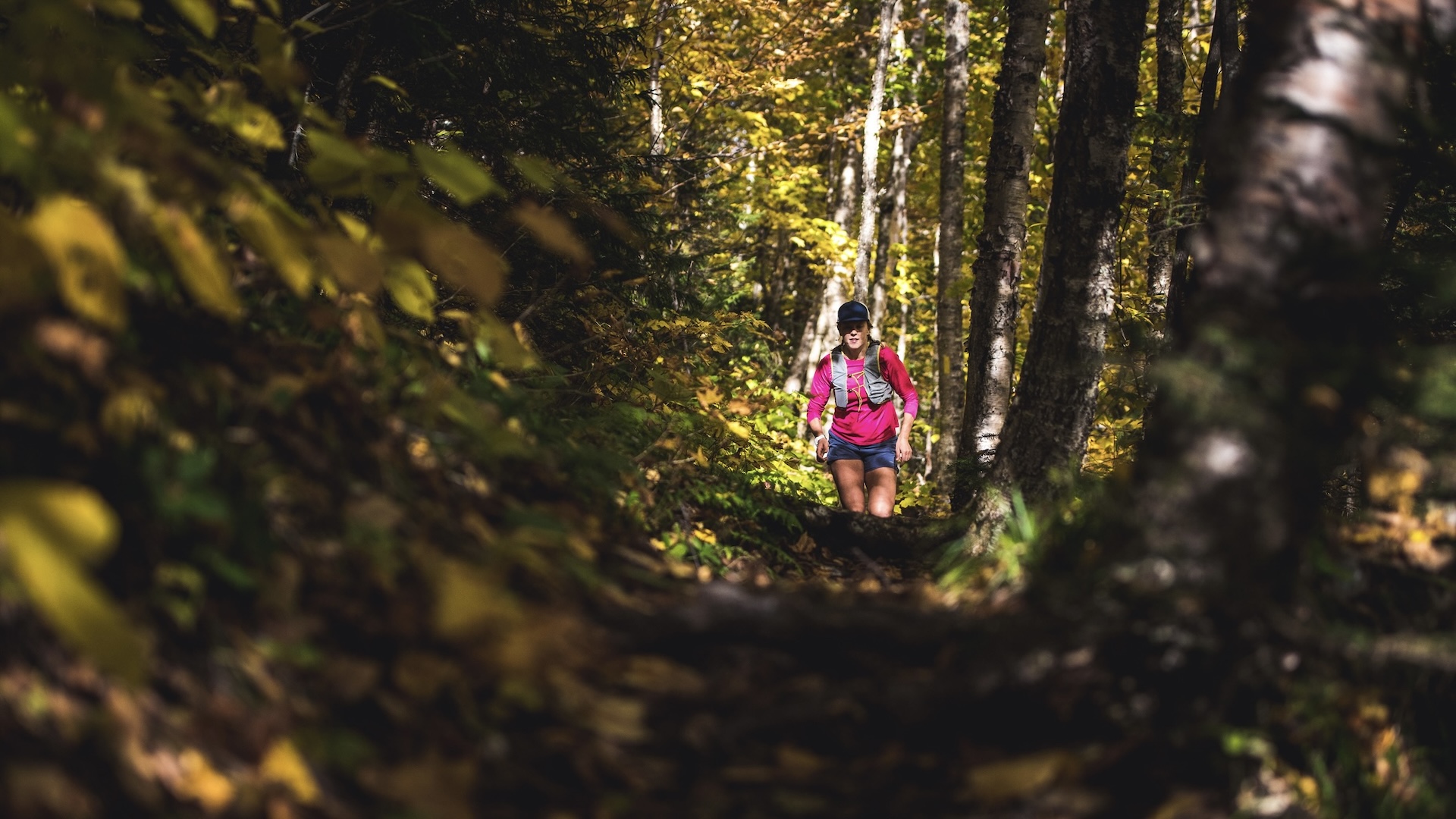
As summer turns to fall, I plan to change what I am wearing for trail running. I am an experienced trail runner, so I know that it’s important to be dressed for the weather and I will also take more kit in my running pack. If you're new to trail running, here's what you'll need to keep you running through fall.
What I’m wearing now for trail running
Trail running in summer usually means wearing less clothing but it's a good idea to make sure you have a few extra products, such as sunscreen, sunglasses for trail running and a running hat.
In the warmer weather I am most likely to be wearing:
Running shorts or skort
I prefer shorts or a running skort with a double layer. This means the first layer of shorts is more skin-tight and supportive. The inner shorts also provide protection against chafing skin between the thighs.
When it’s warmer, I tend to sweat more and I like the inner shorts to protect my skin from chafing.
An outer layer of shorts or, preferably, a skort, adds a more flattering look. I choose a skort with plenty of pockets, too, for carrying my phone and keys.
Running vest or tee
I prefer short sleeves, or no sleeves, for a trail running top. A running vest or tee allows more air to circulate around my torso and underarms so I don’t sweat as much.
I choose lightweight, quick-dry fabrics. I prefer synthetic fabrics to merino because I find natural yarns a bit itchy although I know many trail running friends swear by the wonder fabric of lightweight merino because they wick sweat and do not get too whiffy.
Because I wear synthetic fabrics, I also make sure I have a ready supply of sports clothing detergents to see off the bad odours during the laundry cycle.

Trail running socks and footwear
Feet can get pretty sweaty and smelly when running on summer trails. Mud and wet is less of a problem so I usually wear a lighter weight pair of trail running shoes in the summer season.
I do not need to rely on so much grip underfoot and so I amore likely to be in footwear with smaller and less aggressive lugs.
I wear merino-synthetic running socks to keep my feet as sweat and odour-free as possible.
What do I pack for a longer trail run in summer?
If I am heading out for more than 10km, I’ll take a running pack. This will include a water bottle, an energy bar, a lightweight waterproof running jacket or windproof jacket depending on the weather forecast and maybe a lightweight long-sleeve baselayer.
I always take an emergency blanket or bivvy bag and my phone in case of an unforeseen incident.
Heading into more remote routes means I’ll take even more essential items. When I say essential, I mean that these are the products I might need if I end up having a fall or accident.
The addition of a lightweight insulated jacket and a Personal Locator Beacon, plus more food and water ensures I am covered for different eventualities.

How I update my trail running kit for fall
The weather in fall, compared to summer, will be far less predictable. There is a much greater chance of harsher conditions, including rain, wind, cold and perhaps some hail, sleet or snow.
It’s really important that trail runners check the weather forecast before they set out. Consider changing your route or plans, or stay at a lower level, or away from areas of high winds, if the forecast is especially inclement.
In the fall, when I go trail running, I am most likely to be wearing:
More clothing layers
Instead of only a running vest or tee, or a skort, I will start a run with an extra top, such as a long-sleeved running basleyer. I might still be in a skort, but if it looks like it will be chilly, I might swap for running tights.
Sometimes the compromise is three-quarter length running tights, or longer socks so that less skin is exposed to the elements.
Mostly, however, I find that I am fine if I wear a skort or shorts, so long as I am wearing several warmer top layers.
Definitely a waterproof or windproof jacket
If you are trail running in the fall, you will face a much greater chance of rain or wind. To make sure you protect yourself form the elements, you should wear or carry a good quality waterproof running jacket.
I usually prefer to take a waterproof running jacket because it will keep me dry in the rain and protect in the wind. But if you are sure there will be no rain, a windproof jacket – a windbreaker – could be the right choice.
Windproof jackets do tend to be more breathable than waterproof jackets, which is something to consider in fall when air temperatures might still be quite high even if windy.
Headwear and gloves
Trail running does make you warm up quickly, but it’s easy to end up with cold ears and hands due to the air temperature or the wind. Even if you don’t wear these items, you should carry them with you.
Trail running in fall usually goes like this for me: I start with several layers of clothing, headwear and gloves. Then, as I warm up, I peel off the layers and stuff the gloves in my pack.
If I stop, whether to eat while looking a the view or to chat with a friend, I quickly add the discarded layers so that I don’t lose too much body heat.
If the trail running route ascends up to a higher altitude, I am always grateful for the extra layers and gloves. I suffer with Raynaud’s Syndrome, so gloves are an essential part of my kit list except for on the warmest of summer days.

Trail running footwear in fall
The ground often ends up being wet in the fall. There is also a great chance of slippery fallen leaves in this season.
Your choice of shoes for running in fall will depend where you plan to run.
I usually choose more aggressively lugged footwear for fall – and winter – trail running. The aim is to gain more traction and when running on trails, especially in the hills and mountains, I go for the most grip I can get.
My trail running shoes in fall and winter usually have a Gore-Tex liner fabric included, too.
Waterproof socks
Another good tip is to wear waterproof running socks in the fall. These do not provide 100% waterproofing because if they did your feet would sweat and end up wet ins the socks. Rather, these socks provide some protection from the wet and damp and I find they have the advantage of maintaining a warmer temperature.
What I pack for trail running in fall
The list of essential kit is even more important for safety in the fall when trail running. What you need to think about is if you have an accident or get into difficulty, you will leave yourself vulnerable to cold and wet weather.
In my running pack for the fall I always have a waterproof running jacket, a spare baselayer, a lightweight insulated jacket, an emergency bivvy bag, tights (if I am not wearing them,) waterproof over-trousers, extra gloves, a warm hat, a personal locator beacon, my phone, food, spare high energy tablets or gels and water.
I have a larger running pack that I use in the fall, compared to the summer, so as to accommodate all this extra kit.
If I plan to run further, or to places I have not been before, I also make sure I have a way of navigating. A navigation app on your phone is important but so, too, is a back-up map and a compass. I am likely to have the route uploaded to my GPS sports watch for extra security.
A waterproof phone case is another good tip in case you get caught in the rain.
Summer kit for fall
There is likely to be some warmer weather days in fall, too, so you can wear what you would for trail running in summer such as sunglasses, running tees and shorts. It's simply a case of keeping an eye on the weather forecast.
Verdict - what to wear for trail running in fall
Make sure you have trail running kit suitable for the conditions at all times of the year and that means staying warmer and drier when fall weather hits. But, as you ca see from my own experience, you can wear your summer running kit with a few added extras.







